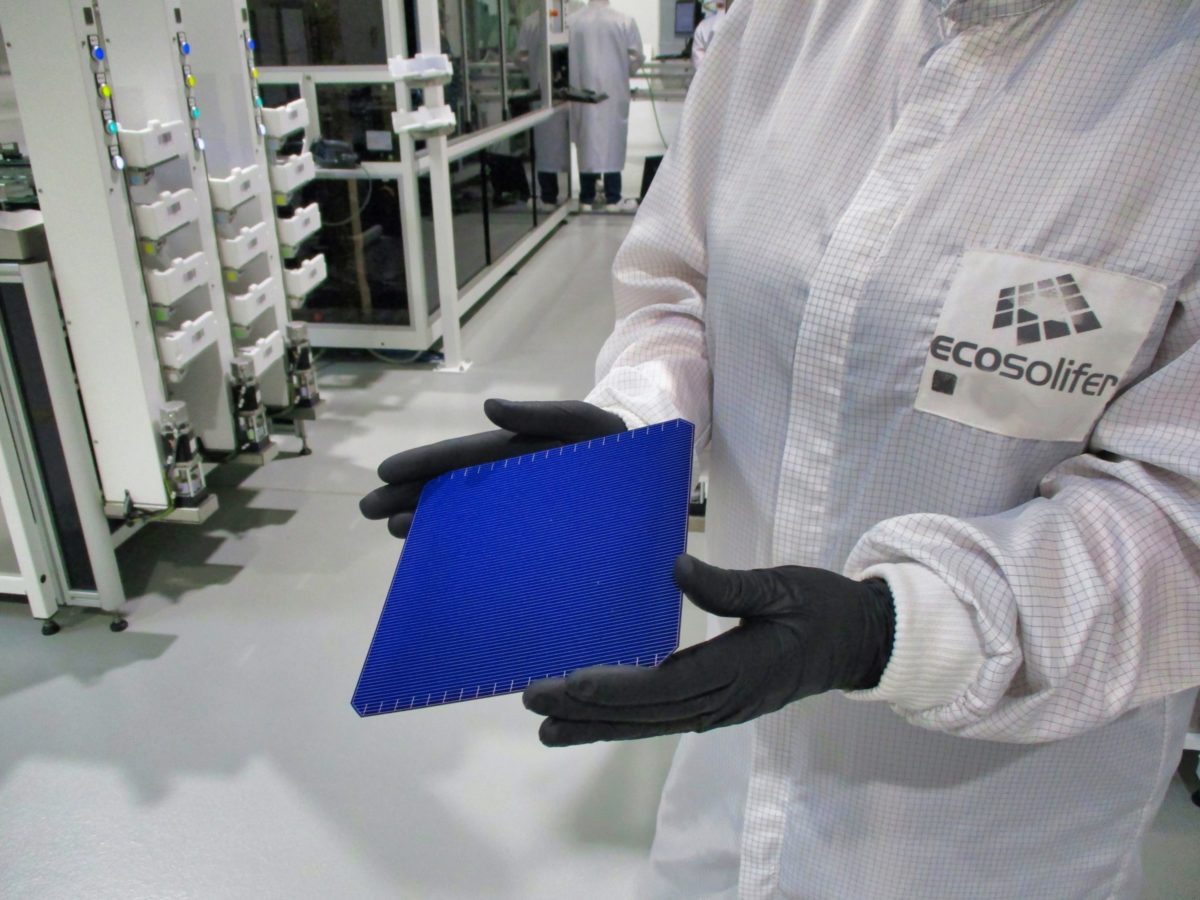Solar cell manufacturer Ecosolifer AG has started commercial production of its bifacial heterojunction solar cells at its 100 MW factory in Csorna, Hungary.
“We are planning to move from one shift mode with 14 MW of capacity to a three shifts system for a total capacity of 100 MW by the end of the second quarter,” the company COO, Rikus Janken, told pv magazine.
According to Janken, the capacity of the factory, which is using a production line provided by Swiss equipment supplier Meyer Burger, may be further raised to 300 MW at a later stage depending on market development.
The cells produced at the facility, which are mostly to be distributed among European module makers, have now reached a conversion efficiency of 24.1%, according to Janken. This result, however, must still be confirmed by a third party. “These results were so far only measured internally with our own measurement equipment,” he further explained.
The average efficiency of the manufactured cell is around 23.5%, not including the bifacial power, Janken added.
Popular content
According to the cell product sheet, the 156.75 x 156.75 mm device has a thickness of 20 mm and is based on a n-type monocrystalline wafer. Both the front and rear sides are busbarless, textured and have transparent conductive oxide (TCO) and antireflective coating.
The cell is available with four different power outputs. With the claimed 24.1% efficiency, the cell has an output of 5.86 W, while a second typology with power output ranging from 5.74 W and 5.85 W has an efficiency between 23.50% and 23.99%. A third version of the cell has an output of 5.61 W to 5.73 W and an efficiency between 23.0% and 23.49%. The cell with the lowest performance of between 22.50% and 22.99% is a device with output varying from 5.49 W and 5.60 W.
The cells are also said to have a low thermal coefficient (< 0.24 %/K) and bifaciality above 93%. “Thanks to these excellent parameters photovoltaic modules assembled from EcoSolifer's heterojunction cell might have the lowest LCoE achievable on the market nowadays,” Janken stated.
The company had originally planned to begin the commercial production in the first quarter of 2018, while the first cells were set to come off the production line in the first half of last year. In August 2015, EcoSolifer signed an around CHF 23 million (approx. US$29.5 million) agreement with Switzerland-based Meyer Burger Technology Ltd for the delivery of the necessary HJT equipment.
This content is protected by copyright and may not be reused. If you want to cooperate with us and would like to reuse some of our content, please contact: editors@pv-magazine.com.



I’m sure it’s all very technically accurate, but I have no idea what it means. Bifacial? Solar Modules? What are they? how will they be used? Why does it matter to anyone? If you are writing for public, remember that we don’t know your jargon.
Hi Adam, I’m sorry if we lost you, the problem with specialist websites like ours is we can get a bit ‘jargony’ sometimes!
Bifacial panels convert sunlight into electricity on the reverse side of the panel as well as the front, the idea being that, in addition to the light falling directly onto the front of the panel, many more photons fall around it and some of them can be refracted, to ‘bounce’ back onto the rear side.
Solar modules are simply the panels, the things you see stuck on roofs or in big projects on the ground – although there’s no point sticking bifacial panels on your sloping roof as the rear side is almost obscured.
The reason research is going into heterojunction, or HJT solar cells (the smaller elements which are made up into those big panels, or modules) is because solar panels featuring that technology are more efficient. In other words, HJT panels convert more of the energy in sunlight into electricity. More efficient panels means fewer panels are required, assuaging concerns about visual appearance. I hope that helps some.
Good like
How does it compare to average off the shelf module efficiency?
Hi Robert, Obviously efficiency varies widely by technology type, end-use of the panel (ie, residential, commercial or utility scale generation) and price point, but for a ballpark figure our experts say around 18-20% would be the current standard. Bear in mind also, the 24.1% figure quoted here is for a cell. Scaling that up to panel level might see the final module lose 1-2% of that figure.
Who are the commercial manufacturers of HJT Bifacial modules in the world?